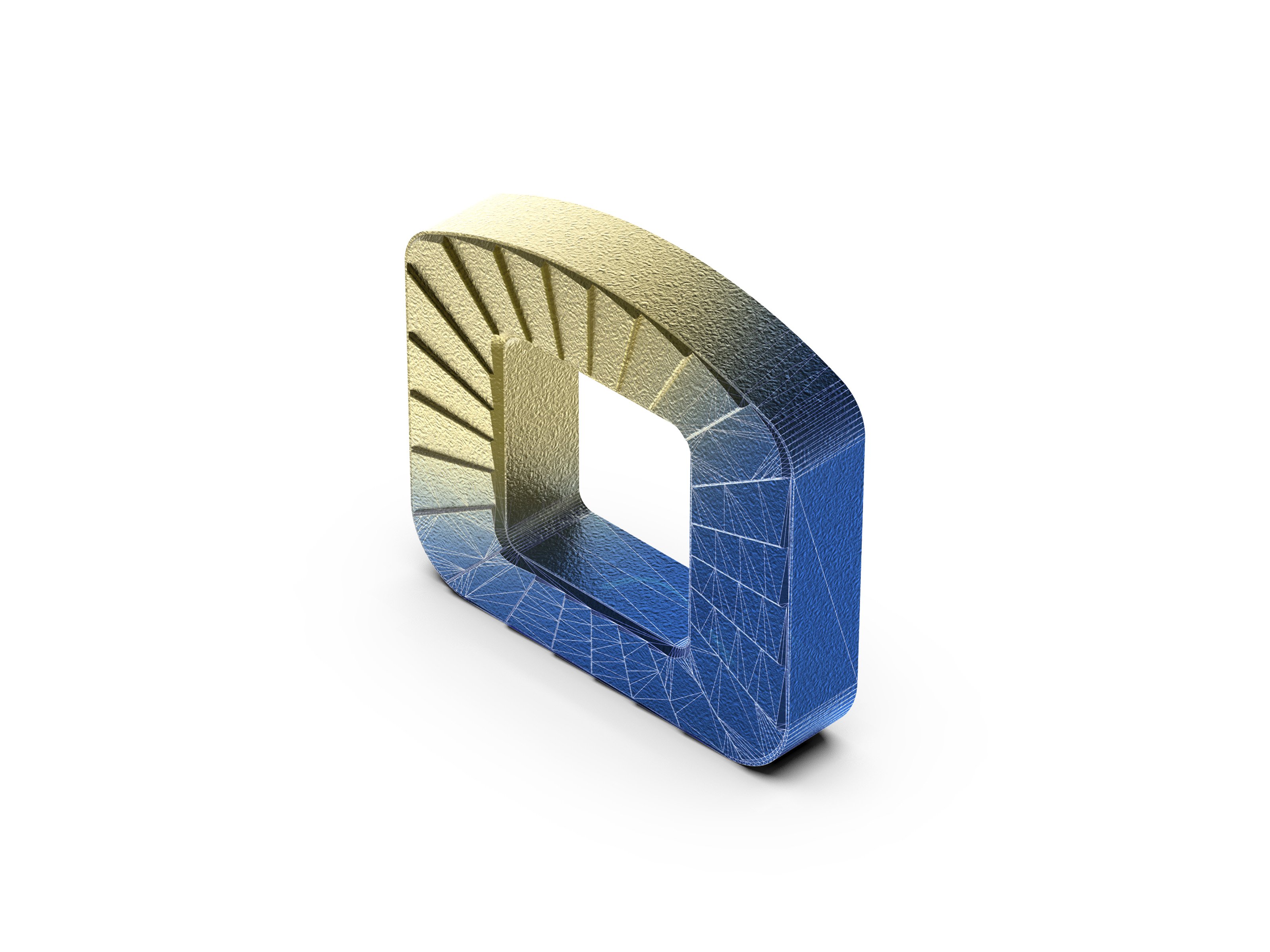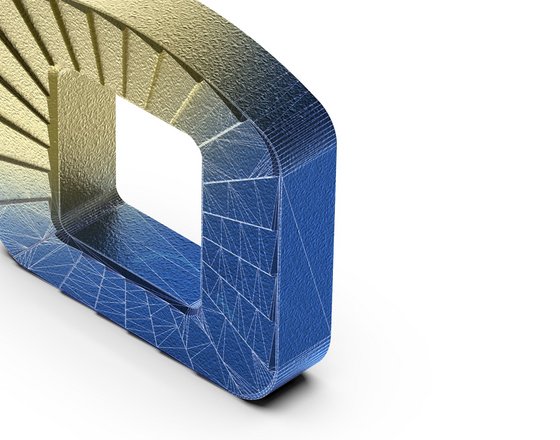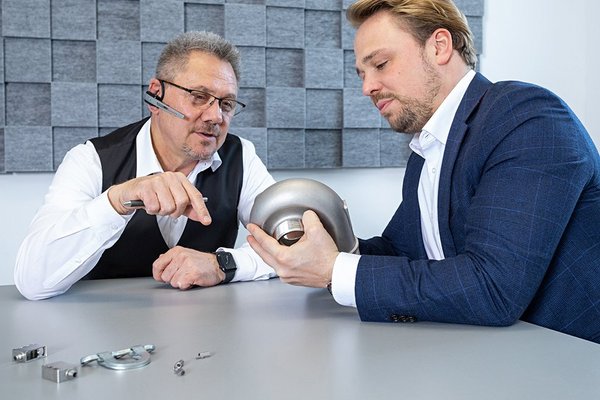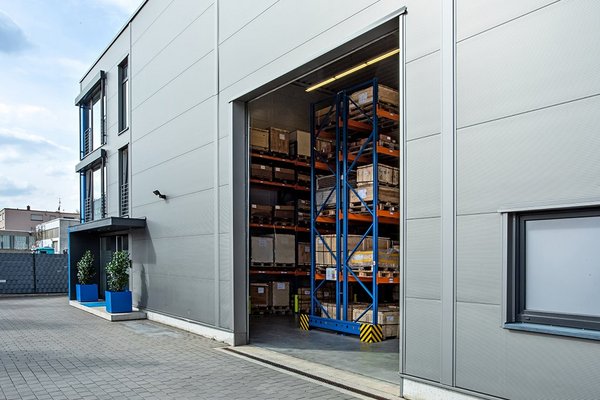
Sintering Technology
Table of Contents
1. What is sintering?
The sintering process is characterized through the fact that the metal alloys are formed into precision parts below their melting temperature. For this purpose, metal powder, depending on the desired alloy, is mixed together and bonded together by heating. The mixture is pressed into the tools and compressed under high pressure. Only after the subsequent heat treatment does the component acquire the desired properties such as strength, hardness or conductivity.
2. Video: What is sintering? Basics about the process
3. Sequence of the sintering process
1. Mix the raw material of the sintered parts
First, the desired powders or granules for the sintering process are selected and mixed in the appropriate ratio. The additional supply of a lubricant additive is also possible here.
2. Shaping
The so-called green body is formed by molding or pressing the mixed raw material into the die at high pressure. This already corresponds to the shape of the desired sintered product.
3. Compression
Now the actual sintering follows. The high-temperature treatment of the green body causes the powder granules to enlarge and fuse. The open porosity of the sintered parts is significantly reduced. Only now do the desired properties of the component, such as strength, hardness or conductivity, arise.
4. Cooling & finishing
In the penultimate step of the sintering process, after cooling, the post-processing takes place. If necessary, mechanical post-processing and surface treatment are carried out here.
5. Final inspection
After the sintering process is complete, all components are subjected to a comprehensive visual inspection. The entire scope of all criteria and measures of quality control in the sintering technology is coordinated according to the functions and customer requirements.
4. A closer look at sintering
Sintering is the process of producing or modifying materials. Despite heating - often under increased pressure - the shape of the workpiece is retained because the heating of the fine-grained ceramic or metallic materials remains below the melting temperature. As the particles of the powdery starting material are compressed and pore spaces are compressed, shrinkage usually occurs during the process.
Basically, sintering processes are of great importance in ceramics production ("sintered glass ceramics") and in metallurgy ("sintered metals" and "powder metallurgy"). Solid-phase sintering must be distinguished from liquid-phase sintering, which also involves melting.
It is only through the temperature treatment of the fine-grained or coarse-grained green body that the sintered product acquires its final properties, such as strength, hardness or thermal conductivity. This can be specifically controlled in the sintering process, depending on the requirements. The green body is formed in a previous process step, such as extrusion.
4.1 The basic principle of sintering
The sintering process begins with the mixing of the granular or powdery materials. The granulate is then heated and bonded together or compacted. This is also the decisive difference to pure melting, because no (at least not all) starting materials are melted. Colloquially, the word "baking together" is often used in this context. Sintering is assigned to the production process "forming" and the category "changing material properties".
Powders have a large surface area and thus a large surface energy.
However, every system strives for a state of lowest free enthalpy (lowest internal energy), which is used in sintering. The surface energy decreases because the individual grains increase in size.
The component solidifies due to the simultaneously increasing proportion of saturated chemical bonds.
After mixing the powders, the powder mass is shaped into the form of the workpiece to be produced. In metallurgy, this is usually done by pressing the powder masses. In ceramics production, shaping and subsequent drying takes place - as in the production of stoneware or earthenware, for example. To ensure that the powder particles hold together well, a binder is often used. For example, in cold casting. The green compact or green body created by pressing is then compressed and hardened by a subsequent heat treatment below the melting temperature.

4.2 At what temperatures does sintering take place?
During sintering - the heat treatment - the components pass through three stages in the furnace:
- Elimination of the binder at temperatures between 300 and 600°C.
- Actual sintering at temperatures of 1,120-1,135°C
- Cooling in the furnace
5. Advantages and disadvantages
Advantages of sintering
The clear advantage of sintering lies in the use and merging of starting materials that are very difficult or impossible to combine in any other way.
Disadvantages of sintering
The remaining porosity is the main disadvantage of the sintering process. From a chemical point of view, macroscopic particles of the starting material are still present, which make the component inhomogeneous and therefore brittle in comparison to metal alloys, for example. This results in permeability for liquids and gases, which is generally undesirable. The result is high waste or the need for impregnation.
6. Sintered products
In general, the constant development and optimisation of new metal powders expands the application possibilities for sintered components. Therefore, the use of sintered components does not only extend to the automotive industry or sectors of household, do-it-yourself and office machines.
- Ceramic production: components such as cutting ceramics, electroporcelain or ceramic magnets
- Production of metal moulded parts: metal moulded and finished parts in large series, as in the
- automotive industry, e.g. bearings and bearing shells, plain bearings, components for engines and gearboxes, screens, filters, permanent magnets and brake linings
- Tool parts or indexable inserts made of hard metals
- Dental technology: production of ceramic teeth, veneers
6.1 What cannot be produced by sintering?
Holes and recesses in a workpiece that lie at right angles to the pressing direction or have a thread.
7. Origin of sintering technology
The sintering process has been used since the invention of ceramics and is constantly being empirically refined. While the firing of porcelain is one of the oldest applications, sintering iron became increasingly important due to the shortage of copper during the Second World War.
Systematic research into the sintering process did not begin until the 1950s, however.
1950s, when metal components began to be produced from powder mouldings.
The knowledge gained from this was subsequently transferred to the handling of high-performance ceramics.
Since the invention of sintering technology in the early 1990s, the sintering process has also been known as laser sintering (LS), because at that time all systems used a laser.

Do you need sinter Parts?
Find out more about the specifics of the sintering process at Richter Formteile here.
Service – to suit your needs
We see ourselves as your partner across the value chain.

Technical Advice
We support you with your expert questions ✓ Coordinate your requirements and the technical drawings with our specialist staff!

Processing / Assemblies
Extensive processing, surface treatment of metal parts ✓ pro-assembly and assembly of modules ✓ Tell us your requirements now!

Supply chain management
In addition to the development and production of the components, we also take care of ✓ Procurement ✓ Logistics ✓ Customs clearance - Find out more and benefit from the advantages now!
8. Questions and answers about the sintering process
FAQs on sintering technology
Sintering is a heat treatment process in which fine-grained metal or ceramic particles are bonded together at a high temperature without the material melting completely. The result is a solid, dense component with high strength and good mechanical properties.
This is how sintering works:
- Heating below the melting temperature
- The material is heated to 60-90% of its melting temperature.
- Metal particles begin to fuse at their contact points.
- Diffusion & densification
- Atomic movement (diffusion) causes the grains to grow together.
- Pores in the material are reduced and the density increases.
- Solidification & cooling
- After a certain holding time, the material is slowly cooled.
- The component acquires its final mechanical strength and dimensional accuracy.
The sintering temperature depends on the material and is typically between 60-90% of the melting temperature of the respective metal or alloy. Here are some typical values:
| material | sintering temperature (°C) |
|---|---|
| stainless steel (316L, 17-4 PH) | 1.200 – 1.400 |
| tool steel (M2, H13) | 1.100 – 1.250 |
| titanium (Ti-6Al-4V) | 1.200 – 1.300 |
| Tungsten alloys | 1.400 – 2.200 |
| Nickel-based alloys (Inconel) | 1.200 – 1.300 |
| Cobalt-chrome (Co-Cr) | 1.250 – 1.350 |
| Hard metal (WC-Co) | 1.350 – 1.500 |
It should be noted that the sintering temperature is influenced by the material composition, sintering atmosphere and sintering process.
The sintering temperature is therefore usually between 1,100-1,400 °C, depending on the metal. High-melting materials such as tungsten require over 2,000 °C.
Sintering is used for a variety of metals, alloys and ceramics. Here are the most important material groups:
- Metallic materials
- Iron & steel alloys
- Stainless steel (316L, 17-4 PH, 304L) - Corrosion resistant, for medical technology & automotive industry.
- Tool steel (M2, H13, D2) - High hardness & wear resistance, for cutting tools.
- Carbon steels (Fe-C, Fe-Ni-Cr) - For mechanical components & gear wheels.
- Hard metals & heavy metals
- Tungsten alloys (W-Ni-Fe, W-Ni-Cu) - Very high density, for shielding & precision weights.
- Hard metals (WC-Co, TiC-Ni) - Extremely wear-resistant, for drills, milling cutters & cutting tools.
- Light metals
- Titanium alloys (Ti-6Al-4V) - Biocompatible, light & strong, for medical technology & aerospace.
- Aluminum alloys - For lightweight construction applications, but less frequently in the MIM process.
- High temperature alloys
- Nickel-based alloys (Inconel 718, Hastelloy X) - Heat-resistant, for turbines & aerospace.
- Cobalt-chromium alloys (Co-Cr-Mo) - Wear-resistant & biocompatible, for dental implants.
- Iron & steel alloys
- Ceramic materials (ceramic sintering)
- Aluminum oxide (Al₂O₃) - Very hard & chemically resistant, for insulators & medical applications.
- Zirconium oxide (ZrO₂) - High fracture toughness, for dental implants & knives.
- Silicon carbide (SiC) & boron nitride (BN) - Heat resistant, for high temperature applications.
- Powder metallurgical SINT materials
- SINT-C - Sintered carbon steel, often used for mechanical components with high strength.
- SINT-D - Sintered iron-carbon alloy, often for wear-resistant components.
- SINT-E - Copper or bronze-based sintered material, often for self-lubricating plain bearings.
- SINT-AL - Aluminum-based sintered material, lightweight and corrosion-resistant.
- SINT-ST - Stainless steel-based sintered material with high corrosion and temperature resistance.
Almost all metals, hard metals and technical ceramics can be sintered. The choice of material depends on the requirements for strength, corrosion resistance, temperature resistance and density.
Richter Formteile specializes exclusively in metallic materials. See which ones here.
Sintering technology is used in a wide range of industries, as it makes it possible to produce high-precision, resilient and complex components made of metal or ceramic. Richter Formteile specializes exclusively in metallic components. The most important industries include
- Automotive industry
- Manufacture of gears, bearings, valves, connecting rods and other components with high strength and wear resistance.
- Application in transmissions, engines and brake systems.
- Aerospace
- Production of lightweight and high-strength structural components.
- High temperature resistant materials for turbine blades and engine components.
- Medical technology
- Implants (e.g. hip and knee prostheses, dental implants).
- Surgical instruments made from biocompatible materials.
- Electronics and electrical engineering
- Manufacture of contact materials, electromagnets, heat exchangers and heat sinks.
- Application in sensors, resistors and electrical switches.
- Tool manufacture and mechanical engineering
- Manufacture of carbide tools such as cutting inserts, milling cutters and drills.
- Abrasive and wear-resistant components for machines.
- Energy and environmental technology
- Fuel cell components and filters for exhaust gas purification.
- Production of porous sintered metals for the oil and gas industry.
- Consumer goods industry
- Manufacture of watch components, jewelry, kitchen appliances and household tools.
- Additive manufacturing (3D printing with sintering processes)
- Selective laser sintering (SLS) for plastic and metal parts in prototyping and series production.
Thanks to the flexibility of the sintering process, materials with customized properties can be produced, making the technology indispensable in many industries.
Sintering technology offers an optimum balance between cost-effectiveness, material efficiency and high precision, especially for the series production of technical components. There are numerous advantages compared to other manufacturing processes such as casting, milling or forging:
- Material efficiency: little waste, recyclable powder.
- Complex geometries: Precise shapes without major reworking.
- Variety of materials: metals, ceramics, porous or dense structures possible.
- Cost efficiency: Particularly economical in series production.
- Mechanical advantages: High hardness, wear resistance, less internal stress.
- Sustainability: Lower energy consumption and CO₂ emissions.
Yes, complex geometries can be produced using sintering technology. As the material is processed in powder form, intricate structures, cavities and the finest details can be realized that would be difficult or impossible to achieve with casting or milling.
Special features:
- High dimensional accuracy without time-consuming post-processing
- Integrated cavities and channels for lightweight or functionally integrated components
- Porous or dense structures depending on application requirements
The remaining porosity, due to residual macroscopic particles of the starting material, makes the component inhomogeneous and brittle, making it permeable to liquids and gases.
- Lower strength due to porosity and reduced density.
- Limited precision with very fine details or sharp edges.
- Limited component size, as shrinkage and warpage can occur.
- High tooling costs are only worthwhile for large series.
- Not all materials are suitable, especially very ductile metals.
Nevertheless, sintering remains an efficient solution for complex and economical series production.